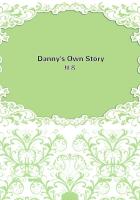Those are an island of the Old World, called now the Mendip Hills; and we are steaming along the great strait between the Mendips and the Welsh mountains, which once was coral reef, and is now the Severn sea; and by the time you have eaten your breakfast we shall steam in through a crack in that coral-reef; and you will see what you missed seeing when you went to Ireland, because you went on board at night.
* * *
Oh! Where have we got to now? Where is the wide Severn Sea?
Two or three miles beyond us; and here we are in narrow little Avon.
Narrow indeed. I wonder that the steamer does not run against those rocks. But how beautiful they are, and how the trees hang down over the water, and are all reflected in it!
Yes. The gorge of the Avon is always lovely. I saw it first when I was a little boy like you; and I have seen it many a time since, in sunshine and in storm, and thought it more lovely every time.
Look! there is something curious.
What? Those great rusty rings fixed into the rock?
Yes. Those may be as old, for aught I know, as Queen Elizabeth's or James's reign.
But why were they put there?
For ships to hold on by, if they lost the tide.
What do you mean?
It is high tide now. That is why the water is almost up to the branches of the trees. But when the tide turns, it will all rush out in a torrent which would sweep ships out to sea again, if they had not steam, as we have, to help them up against the stream. So sailing ships, in old times, fastened themselves to those rings, and rode against the stream till the tide turned, and carried them up to Bristol.
But what is the tide? And why does it go up and down? And why does it alter with the moon, as I heard you all saying so often in Ireland?
That is a long story, which I must tell you something about some other time. Now I want you to look at something else: and that is, the rocks themselves, in which the rings are. They are very curious in my eyes, and very valuable; for they taught me a lesson in geology when I was quite a boy: and I want them to teach it to you now.
What is there curious in them?
This. You will soon see for yourself, even from the steamer's deck, that they are not the same rock as the high limestone hills above. They are made up of red sand and pebbles; and they are a whole world younger, indeed some say two worlds younger, than the limestone hills above, and lie upon the top of the limestone. Now you may see what I meant when I said that the newer rocks, though they lie on the top of the older, were often lower down than they are.
But how do you know that they lie on the limestone?
Look into that corner of the river, as we turn round, and you will see with your own eyes. There are the sandstones, lying flat on the turned-up edges of another rock.
Yes; I see. The layers of it are almost upright.
Then that upright rock underneath is part of the great limestone hill above. So the hill must have been raised out of the sea, ages ago, and eaten back by the waves; and then the sand and pebbles made a beach at its foot, and hardened into stone; and there it is. And when you get through the limestone hills to Bristol, you will see more of these same red sandstone rocks, spread about at the foot of the limestone-hills, on the other side.
But why is the sandstone two worlds newer than the limestone?
Because between that sandstone and that limestone come hundreds of feet of rock, which carry in them all the coal in England. Don't you remember that I told you that once before?
Oh yes. But I see no coal between them there.
No. But there is plenty of coal between them over in Wales; and plenty too between them on the other side of Bristol. What you are looking at there is just the lip of a great coal-box, where the bottom and the lid join. The bottom is the mountain limestone; and the lid is the new red sandstone, or Trias, as they call it now: but the coal you cannot see. It is stowed inside the box, miles away from here. But now, look at the cliffs and the downs, which (they tell me) are just like the downs in the Holy Land; and the woods and villas, high over your head.
And what is that in the air? A bridge?
Yes--that is the famous Suspension Bridge--and a beautiful work of art it is. Ay, stare at it, and wonder at it, little man, of course.
But is it not wonderful?
Yes: it was a clever trick to get those chains across the gulf, high up in the air: but not so clever a trick as to make a single stone of which those piers are built, or a single flower or leaf in those woods. The more you see of Madam How's masonry and carpentry, the clumsier man's work will look to you. But now we must get ready to give up our tickets, and go ashore, and settle ourselves in the train; and then we shall have plenty to see as we run home; more curious, to my mind, than any suspension bridge.
And you promised to show me all the different rocks and soils as we went home, because it was so dark when we came from Reading.
Very good.
* * *
Now we are settled in the train. And what do you want to know first?
More about the new rocks being lower than the old ones, though they lie on the top of them.
Well, look here, at this sketch.
A boy piling up slates? What has that to do with it?
I saw you in Ireland piling slates against a rock just in this way. And I thought to myself--"That is something like Madam How's work."
How?
Why, see. The old rock stands for the mountains of the Old World, like the Welsh mountains, or the Mendip Hills. The slates stand for the new rocks, which have been piled up against these, one over the other. But, you see, each slate is lower than the one before it, and slopes more; till the last slate which you are putting on is the lowest of all, though it overlies all.
I see now. I see now.
Then look at the sketch of the rocks between this and home. It is only a rough sketch, of course: but it will make you understand something more about the matter. Now. You see, the lump marked A. With twisted lines in it. That stands for the Mendip Hills to the west, which are made of old red sandstone, very much the same rock (to speak roughly) as the Kerry mountains.
And why are the lines in it twisted?














